2023 was a successful year for lynx reintroduction, with 17 animals released as a part of a long-term collaboration between West Pomeranian Nature Society (ZTP) and Rewilding Oder Delta (ROD), backed by Rewilding Europe’s European Wildlife Comeback Fund (EWCF).
Now, thanks to the approval of the LIFE programme the continued support for the collaborative efforts is secured for the next 5 years. As the project involves organisations from Germany, Poland, and Lithuania, it not only marks a significant chapter in the conservation of lynx populations in the region but also expands the international partner network.
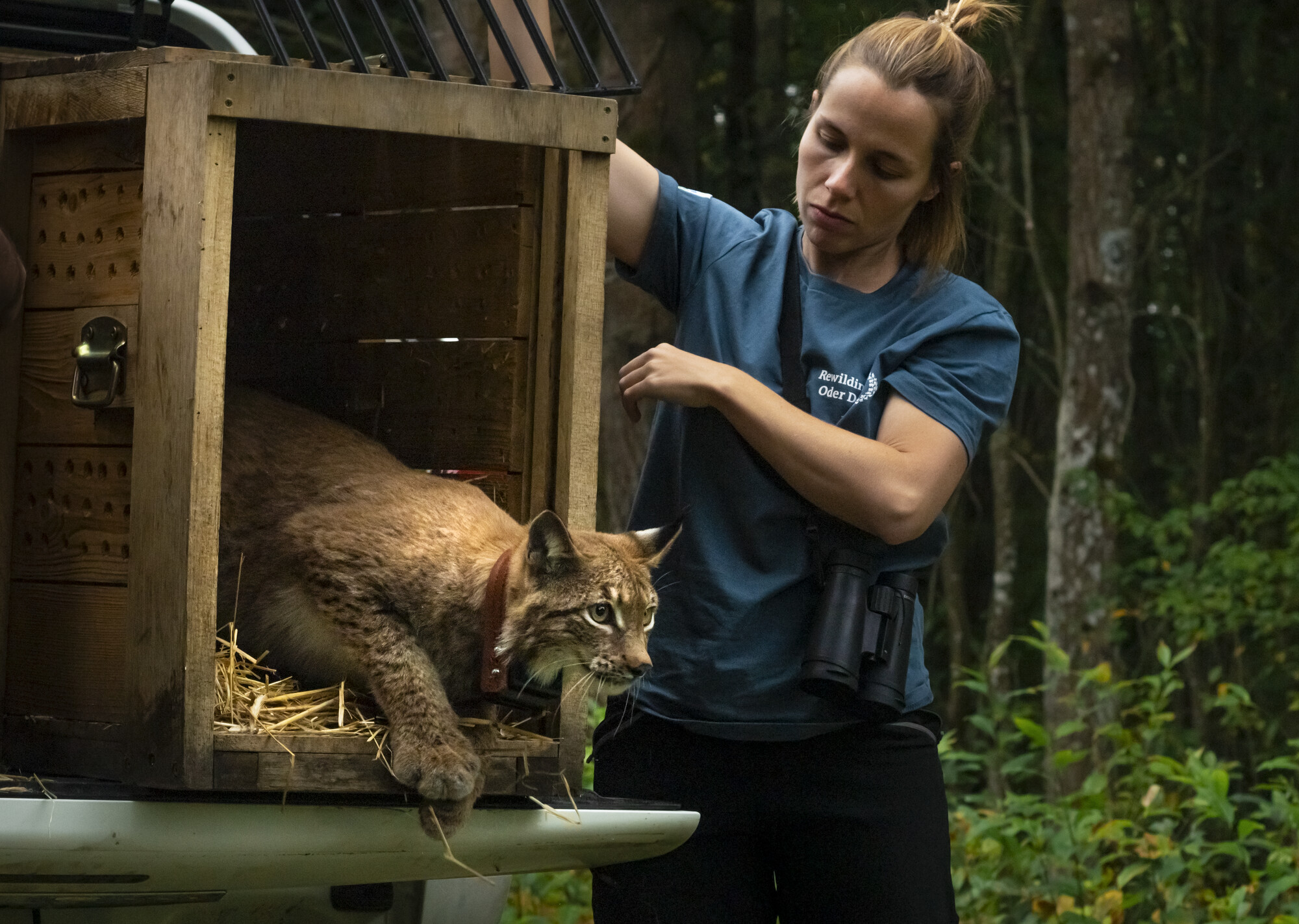
The lynx releases of 2023: a conservation milestone
In spring 2023, ZTP partnered with ROD to release three juvenile Eurasian lynx – Francuz, Rocky, and Rudi – into the Polish wilderness. This action formed part of 17 lynx releases funded by EWCF in 2023 and run by ZTP, contributing to the restoration of keystone species populations across Europe that will support the establishment of self-regulating, resilient ecosystems.
Current status of the released lynx
The lynx released in March 2023, Francuz, Rocky, and Rudi, have successfully adapted to the wild. The female Rudi has established a home range in the North of the Wielkopolskie Voivodship, sharing the area with the mature male, Rudy. “We are excited to say that there is a big chance for kittens this year“, says Marcin Grzegorzek, field officer at ZTP.
Meanwhile, Rocky roams the forests of Northern Kujawsko-Pomorskie Voivodship, demonstrating the adaptability of these felines.
However, Francuz faced the common challenge of habitat fragmentation, emphasising the need for increased connectivity in the natural landscape. “Francuz made a trip to the South but was stopped by the highway A2. From September 2023 on, he was stuck in an area by the A2, close to Poznań”, Marcin explains.
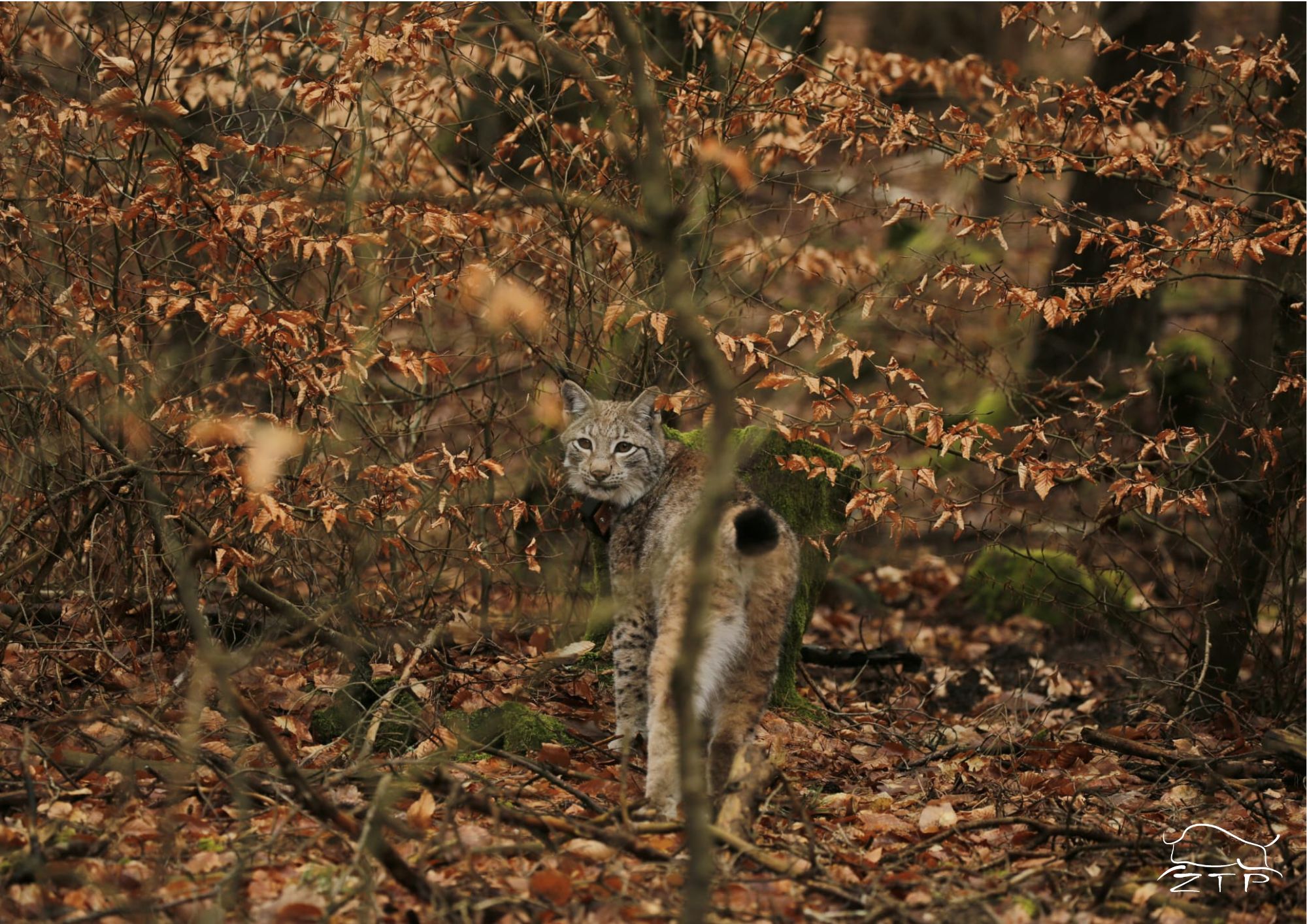
Expanding lynx populations and transboundary cooperation
With the lynx population growing, an intensified 5-year-long cooperation will secure the upcoming conservation efforts in the scope of LIFE22-NAT-PL-LIFE LYNX PL LT DE „Expanding the range of the lynx population in northern Poland”. ZTP, as the lead partner, plans 40 more reintroductions to diversify the gene pool, connect subpopulations, and restore the historical range of the Baltic lynx metapopulation. ROD in North-Eastern Germany, The Spychowo Forest Disctrict in North-Eastern Poland and the Ecosystems Protection Centre (EPC) in Southern Lithuania will contribute to acceptance efforts in regions where the lynx population will likely expand.
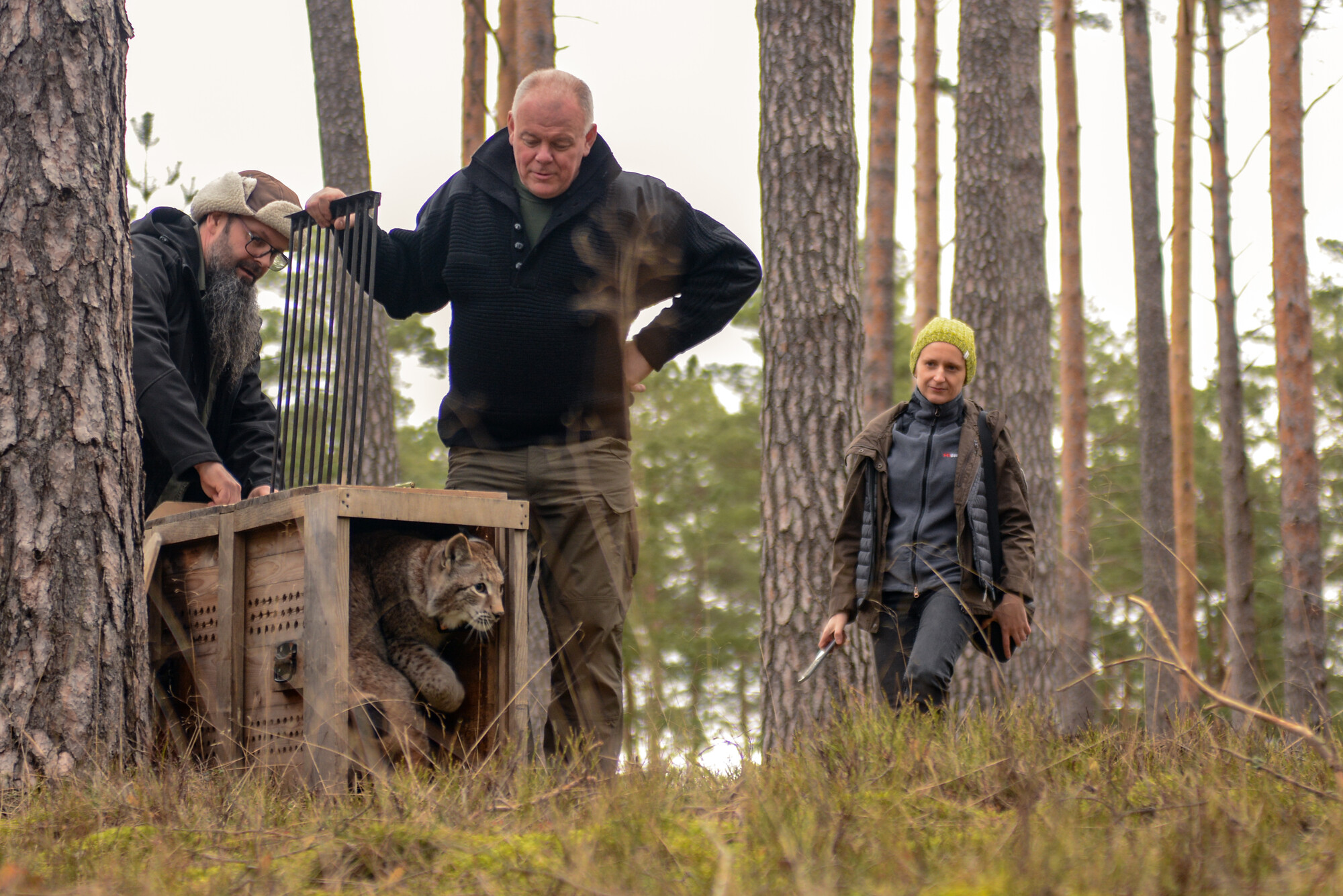
In Germany, another focus will be put on creating a network of relevant stakeholders for lynx management and engaging local communities to inform them about lynx habitat, behaviour, ecology, its importance and strategies for living alongside wildlife in a way that benefits both people and nature. All organisations will also set the ground for lynx monitoring in their respective activity areas.
Field training and hands-on conservation efforts
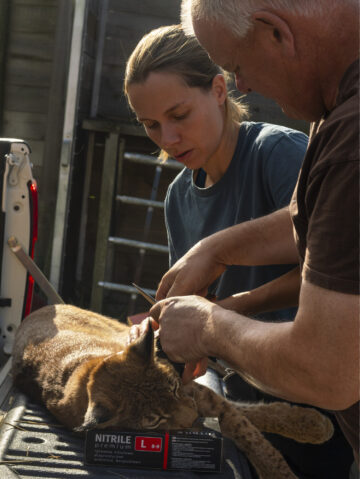
In autumn 2023, ROD field officers underwent training led by Polish ZTP to establish a German field team. This team will monitor lynx populations using telemetry data, record lynx kills to analyse their diet and assist ZTP in releasing lynx into the Polish wilderness.
The training, a “learning by doing” process, includes operating the tracking antennae, fitting telemetry collars, and handling blowpipes, a method for immobilising animals before release. “The intense training at ZTP allows us to gain valuable hands-on experience and perfectly prepares us for our interventions in the future.” says participant Wiebke Brenner, ROD Wildlife Comeback Officer.
Ecological importance of lynx and trophic complexity
Once on the brink of extinction, the Eurasian lynx has rebounded to around 9,000 individuals in Europe today (excluding Belarus and Russia due to lack of data). Protected under various conventions, including the Bern Convention and CITES, lynx play a crucial role as top predators in maintaining ecological balance. They control their prey populations, mainly consisting of herbivores, in several ways: Most obviously, they reduce the number of individuals through hunting. By targeting mainly weak, sick and old individuals, they also keep the populations healthy. Moreover, predators create a so-called “landscape of fear” for their prey species: To avoid predation, prey individuals stay mobile and graze in a dynamic manner. This prevents overgrazing, allows for natural regeneration and contributes to healthy forest ecosystems.
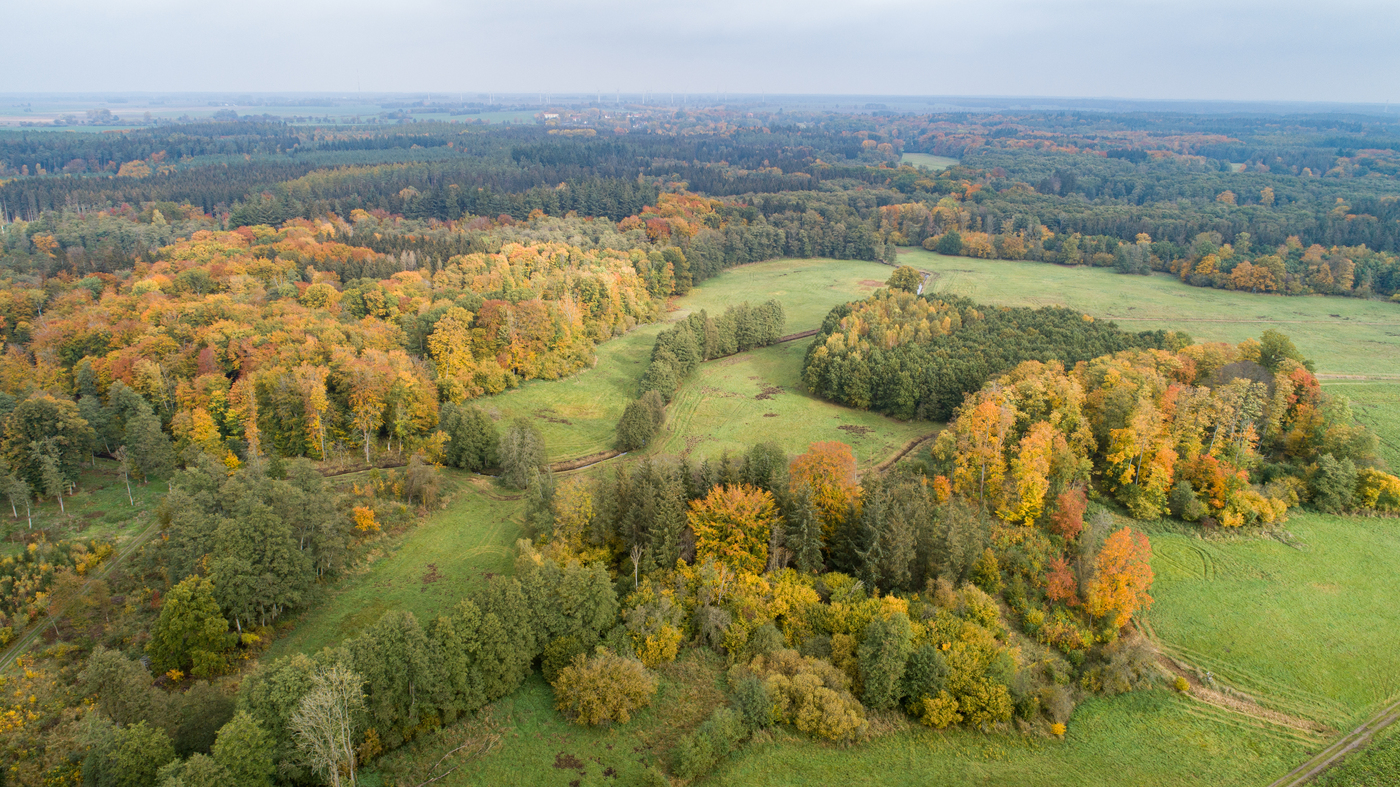
Looking ahead
The transnational commitment to restoring lynx populations and their ecological function reflects not only a big step in conservation but also highlights the intricate web of ecological interactions that trophic rewilding aims to restore. “We strongly believe that restoring ecosystems on a landscape scale is achievable when various institutions, businesses, organisations and individuals cooperate and share the same vision. Therefore, we are excited to see these new cross-border collaborations that have emerged, bringing us closer to achieving our common goal.” Peter Torkler, ROD Team Leader, concludes with enthusiasm.

Text: Sabine Lydia Müller
Edit: Agnieszka Soboń
Substantive consultation: Wiebke Brenner